
Insight
Building a ‘Procurement Ready’ Knowledge Base – Part 2
By Mark Webb |
Tier 2 information is being created by Category Managers – the challenge is standardising an approach and sharing it
Introducing Tier 2 – Category Specific Knowledge
Supply Chain Footprint: This involves mapping first tier suppliers and identifying the geographic locations from which they supply the organisation. The next step is to map further tiers of the supply chain and associated production locations. This knowledge of suppliers and production locations in the supply chain allows supply risk (e.g. assurance of supply), reputation risk (e.g. suppliers CSR practices) and commercial risks (e.g. switching costs) to be identified and managed.
Revenue & Profitability Overlays: The purpose of this is to typically either support focused margin recovery work or understand where high revenue is being achieved and to develop proactive revenue management activity. Rather than focusing on the cost of the individual part number or subcategory, the cost of these are grouped together around a customer end product or service. Cross functional teams can then work collaboratively to either identify potential cost reduction opportunities or support the value assurance of high revenue sales. By working in this way cross category opportunities can be identified which may not have been identified by following a single category focused way of working.
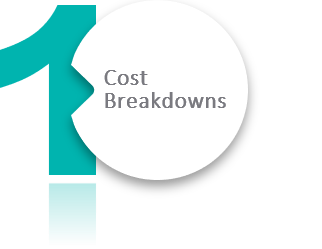
Procurement Ready Knowledge Base – 1 Cost Breakdowns
Cost breakdown or PPCA (Purchase Price Cost Analysis) activity establishes the key cost elements that are incurred by the supplier providing a product or service. By estimating the % split of the supplier’s price that is likely to be attributable to each cost element, comparisons can be made across suppliers. Cost breakdowns also build greater understanding of underlying cost drivers such as specifications, manufacturing processes and service delivery processes etc.
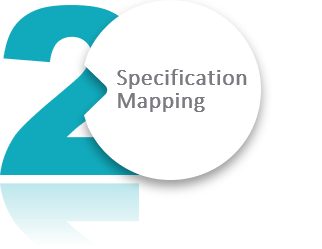
Procurement Ready Knowledge Base – 2 Specification Mapping
Segmenting spend into categories and sub-categories is adequate when estimating potential savings. However, when identifying opportunities during the creation of a category strategy, it is necessary to analyse spend in more detail. This requires the analysis of the specific part numbers or services bought, identifying the specifications and/or performance behind them, along with linking these to the relevant prices and volumes. This information will enable detailed Value Analysis activity to be carried out. For example, this could be linked to the performance specification for specific part numbers of electronic components, departure times for defined flight sectors, or the addresses of high street network branches receiving alarm system reactive maintenance.
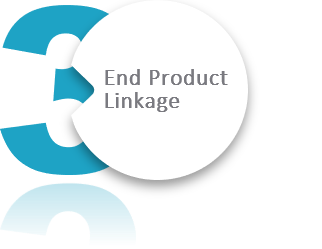
Procurement Ready Knowledge Base – 3 End Product Linkage
This requires an understanding about which sub-categories provided by a supplier are used in which end products provided to customers and making this visible to the supplier. This can be used to motivate suppliers to provide best pricing and/or innovation, so that they feel directly connected to business development with the end customer and can influence demand for their own products and services.
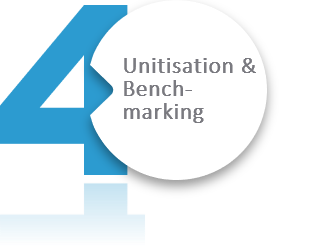
Procurement Ready Knowledge Base – 4. Unitisation & Benchmarking
Unitisation is where spend data is divided by a relevant variable eg area, length, customer satisfaction etc. This allows benchmarking across different suppliers or parts of an organisation, so that variances in performance can be identified. The next step is to look for the causes of the variances, eliminate any bad practices and share the good practices that result in lower costs across the organisation. An example of this approach applied by ourselves, was the analysis of unitised total FM costs per m2 across 80 depots for a UK bus company.
The ‘Procurement Ready’ Knowledge Model
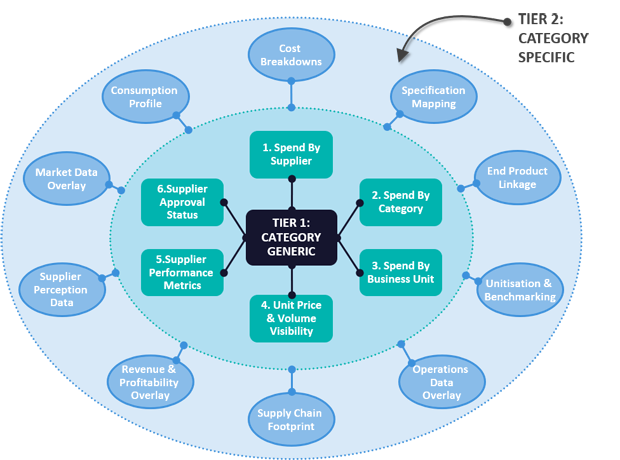
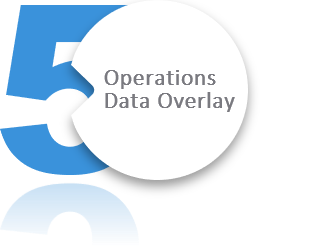
Procurement Ready Knowledge Base – 5. Operations Data Overlay Buying
Buying a substitute product or service that directly compares with the previous one is easy to evaluate in terms of cost difference. However where a substitute has different expected performance the validation or tracking of this can be challenging. For example, these Total Cost of Ownership (TCO) scenarios, can occur when a new chemical is used that is twice as effective as the old one. Equally a new oil filter for a vehicle is claimed to last x miles longer before needing changing. This is where the overlay of operations data can allow a TCO analysis to take place and more complex opportunities identified.
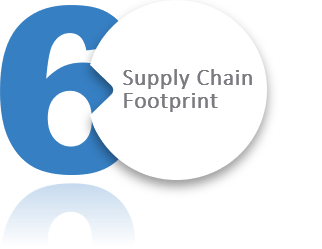
Procurement Ready Knowledge Base – 6. Supply Chain Footprint
This involves mapping first tier suppliers and identifying the geographic locations from which they supply the organisation. The next steps is to map further tiers of the supply chain and associated production locations. This knowledge of suppliers and production locations in the supply chain allows supply risk (e.g. assurance of supply), reputation risk ( e.g. suppliers CSR practices) and commercial risks (e.g. switching costs) to be identified and managed.
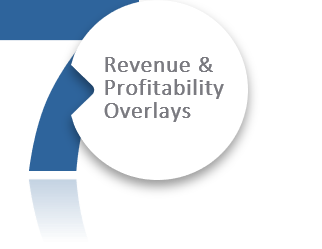
Procurement Ready Knowledge Base – 7. Revenue and Profitability Overlays
The purpose of this is to typically either support focused margin recovery work or understand where high revenue is being achieved and to develop proactive revenue management activity. Rather than focusing on the cost of the individual part number or subcategory, the cost of these are grouped together around a customer end product or service. Cross functional teams can then work collaboratively to either identify potential cost reduction opportunities or support the value assurance of high revenue sales. By working in this way cross category opportunities can be identified which may not have been identified by following a single category focused way of working.

Procurement Ready Knowledge Base – 8. Supplier Perception Data
This is structured qualitative feedback from suppliers and internal stakeholders on the current state of a relationship. It identifies areas of weakness and potential areas for improvement in relationship quality. It helps to identify how important the organisation is as a customer to the supplier. Typical topics covered include how well do the strategic agendas of both parties align? How effectively does the relationship work? How well are the organisation’s business requirements being delivered through the relationship? By having this data and information readily available and clearly linked to the categories it relates to, will allow greater value to be managed and delivered.
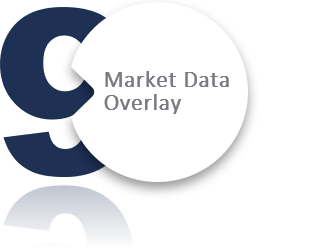
Procurement Ready Knowledge Base – 9. Market Data Overlay
Market data such as utility costs, metals prices, chemical prices, labour rates etc. should be available to relevant procurement team members. This could be because the organisation is directly buying the commodity in question, or it is a key component in a supplier’s cost base and the organisation needs to track changes in that cost base.
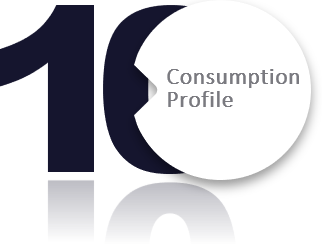
Procurement Ready Knowledge Base – 10. Consumption Profile
This is useful to understand if the organisation has an end customer demand profile that is not flat, but varies throughout the year. By mapping this demand profile and considering it’s impact on specific suppliers, more information can be shared with them, stronger relationships developed and more strategic negotiations undertaken.
The ‘Procurement Ready’ Knowledge Model
In all cases category managers need to consider which value levers are likely to provide new opportunities for obtaining more value and which types of ‘Procurement Ready’ knowledge will help to identify and quantify those opportunities.
Summary & Recommendations for Action
With a higher quality “Procurement Ready” knowledge base, building a strong category strategy is easier and quicker. This in turn builds greater momentum for change. A ‘Procurement Ready’ knowledge base is one of the differentiators between Category Management Leaders and Followers and contributes to the 40% extra savings that Leaders enjoy versus Followers.
In order to implement a “Procurement Ready” knowledge base we recommend that a consistent model is developed and trained so that a language is established across the procurement team.
A further development we have seen, at leading organisations, is to create a specialist function within the procurement team that specialises in producing this information – releasing category managers to focus on developing better category strategies, faster.
The most successful way we have seen “Procurement Ready” knowledge bases be created and developed is where Procurement prioritises the need for this capability and establishes a plan to make it happen.
Read Part 1: How Do Leading Organisations Build a ‘Procurement Ready’ Knowledge Base
Category Management
Making category management a core business competence of modern procurement is a top priority.
Multi-site companies in the private sector and large government departments in the public sector require “one way of working” capable of unlocking value in a fast and flexible manner.
Implementing a ‘Procurement Ready’ strategy is key building block to deliver great value faster. FP is an acknowledged expert in the design, adoption and practical application of this key business process.

About Mark Webb
Managing Director
30+ years procurement experience in line management
and consulting roles.
Previous employment: Price Waterhouse, Mobil Oil and QP Group
Education: BSc in Management Science and MSc in Business by Research, Aston University
CIPS: Member




